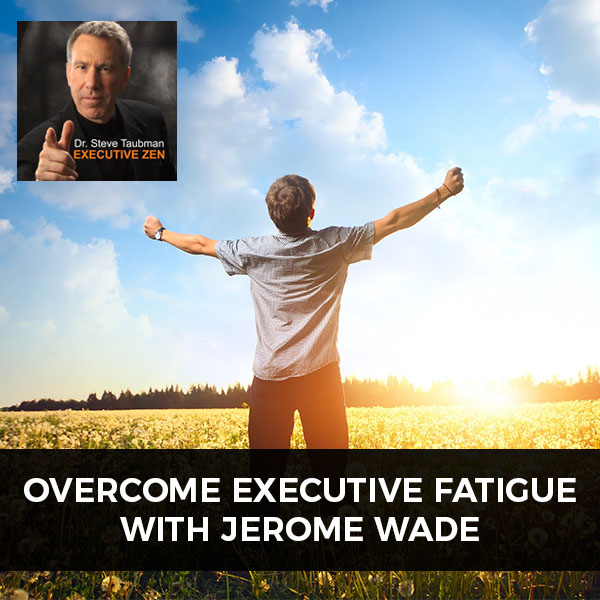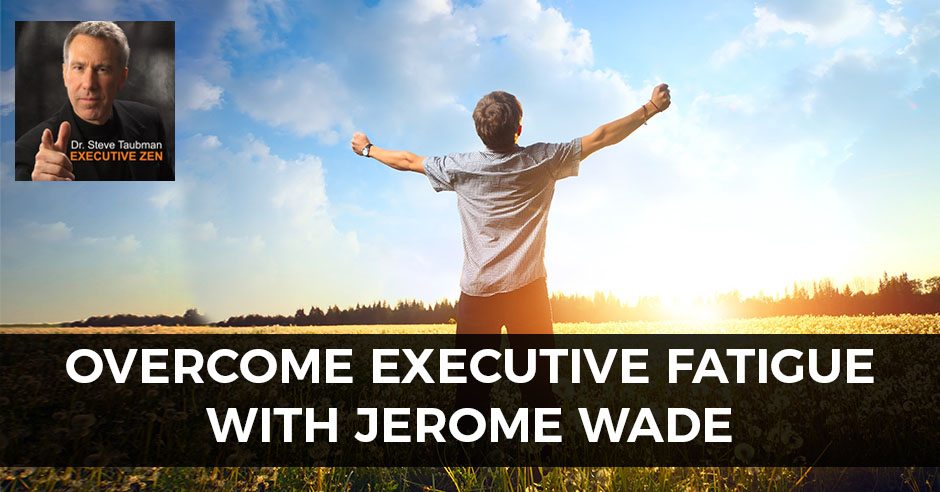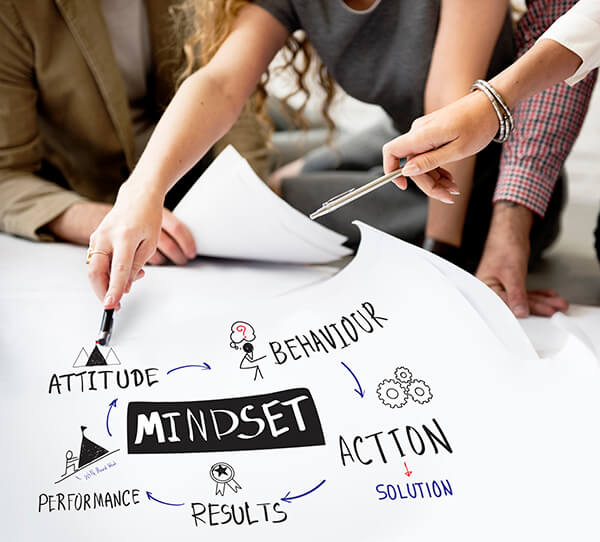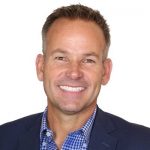

In this episode, I’m thrilled to be speaking with international speaker, author, and expert on overcoming Executive Fatigue TM, Jerome Wade!
Jerome is a seasoned business expert with over twenty five years of business experience and top consultant to C-level executives. He’s the author of the powerful business book, Unleashed.
Jerome and I “speak the same language” and share similar philosophies about performance. If you want to get what you want without losing what you love, this discussion will have a powerful impact on you! 🙂
—
Listen to the podcast here:
Overcome Executive Fatigue with Jerome Wade
I’m excited about today’s topic, which is executive fatigue. Our guest, Jerome Wade, is the world’s leading expert on the topic. I thought I’d say a few words about my experience with fatigue and what I’m going to call my wrap on Zen and the art of remaining calm and centered. What do we do with executive fatigue? I want to do everything, and I can. I can do it at all right now and I could keep doing it forever. That’s my delusion. That’s my fantasy. My guess is that you share that same delusion, that same fantasy. If you’re an accomplished human being in any manner, in any walk of life, in particular, if you’re an executive or a leader of any sort, you probably have that same quality. You want to do everything. You want to do it now and you think you can. You often set out to do it as do I.
Eventually, you hit walls. These are the fascination of my life. These are the thing that most engages my mind. To think about what is it that keeps us from being as infinitely capable as we think we could be or should be? Why is it that we’re not everything we to believe ourselves to be? Why do we sometimes find ourselves up against it? Why do we sometimes find ourselves stuck, exhausted, and despondent, discouraged, overwhelmed with other feelings that affect us? I’ve got to think that we were raised wrong. We’re taught certain things growing up or maybe not taught certain things growing up that may have served us had we been taught them.
If we had been, then we might be aware of the reality that we’re not robots, we’re not automatons. We don’t have the capacity to work endlessly and without rest in a constant effort to achieve some future goal. Instead of holding tight to this delusion that we all are raised with, what if we were to simply admit the reality of life? Admit to ourselves that things aren’t quite the way we’d like to think they could be and then operate from a place of objective reality. That highly successful people, unlike those who are working in the state of mediocrity or those to burn themselves out, they operate on objective reality. Look at your objective reality. What is it that is objectively true for you?
If you have the courage, the wisdom, and the discipline to look at yourself, you’ll see that part of objective reality is that you don’t have the endless capacity. There are times in your life where you’re highly productive. There are other times where you hit those walls were talking about. I’ve made a study of this. I’ve got a few particular points of view about this and I’ll share them with you. I always share at the beginning of the show in the hopes that my expert guest will tell me what I said that wasn’t true and set me straight. We’ve got a great guest here to help us do that. One of the things that I’ve discovered for myself is that it’s not uncommon to find myself way over the line. I’m not always that good at identifying the line over which I’ve crossed. From where on one side of the line I’m operating from a place of passion and enthusiasm. On the other side of the line, I’m operating based on obsession, depression, and obligation.
This magic line of being able to recognize if only we were brilliant and wise all the time we’d say, “Here I go. I just noticed in this very subtle moment that I’m not operating at my best.” The ability to find that, the ability to see that in ourselves would be a huge boon. When I do find myself over the line, often the way I find myself over it is to realize that I’ve got too many things on my plate. Too many things to accomplish and suddenly, I’m overwhelmed and I am immobilized by it all. There are many things that need to be done. I’ve got a list a mile long. In fact, I don’t even have a list because they’ve been building up. They’ve seeped into my world subtly that I don’t even realize all the things that I have to do, but they’re weighing on my subconscious mind. If I’m smart, I’ll make a list.
Know the difference between passion and obsession. Click To TweetThat’s how I discover sometimes that have crossed the line is that I’ve gone too far and there’s too much to do. In my first book, UnHypnosis, I talk about this concept of washing one dish. When you find yourself over the line, your house is a mess, and everything around you is clutter and disarray, rather than letting the disarray win, what you do is you wash one dish. You say, “If I wash one dish in this dirty sink, I will have accomplished my goal for the moment.” Inevitably, what happens is you wash the one dish and then say, “I’ll do the second one, why not?” and then a third. The next thing you know, you’ve got the sink all cleaned out and you’re feeling pretty good about that. You say, “As long as I’ve got a cleaned out sink, I might as well wipe the counters adjacent to this thing.” Before you know it, the kitchen is done and then you’re like, “You can’t have a clean kitchen and a dirty rest of your house,” so one thing leads to another.
This concept of washing one dish and accepting small, micro commitments or small goals as your goal and seeing whether or not there’s a snowball effect. It’s a very powerful tool. Another, for me, is doing an inventory. That’s where you make that list. You look at all the things on your plate, all the things you need to accomplish. Then you start discovering which of those things need to be done. Which ones you could delegate, which ones you could throw off the list entirely, but creating some spaciousness, a mental clarity that will help you overcome the fatigue.
The other one is you have got to develop the discipline to stop. I believe that when there’s so much going on, we become somewhat like addicts. We keep going and going. The world feeds cooperating by giving us more to do. Developing the discipline to stop is a powerful discipline that we could all benefit from. Learning that when your plate is full the answer isn’t always doing more, often the answer is doing less. Then, placing a higher value on balance, having a life that’s balanced. Understanding that energy isn’t infinite, we all have a finite amount of it and knowing the difference between passion and obsession.

Executive Fatigue: When the plate is full, the answer isn’t always doing more often; it is doing less.
Those are the ways in which I have attempted to manage my tendency to do too much, to work too hard, to have too many goals. I’m a worker. I’ve done a lot of things in my life. I will probably continue to do a lot of things in my life. I’ll probably be successful at most of them because of dogged determination. I could be more successful if I also follow my own advice, achieve some degree of balance, shut it down sometimes, and become a little bit more appropriate about what I do and when I do it. Those are my challenges.
I’m hoping that our guest will be able to give me and use some great advice about how to implement principles and ideas to overcome what he calls executive fatigue. The tendency for a leader to find him or herself too far into what they’re doing and too overwhelmed. What happens when executive fatigue is dealt with? What happens to creativity? What happens to resourcefulness? What happens to energy? I’m thrilled to hear about it. I’ve had little conversations with our guest before. He’s a top business consultant to C-level executives. Hopefully, he’ll set me straight on my rap on Zen and the art of overcoming executive fatigue. We’re going to come away with lots of ideas to improve your business. Help you do what you need to do so you can grow rather than perish.
—
My guest is a friend, a colleague, and an interesting guy, Jerome Wade. He is a Certified Speaking Professional, a CSP. He’s an author, an international speaker, and an advisor to executive leaders. He’s had over 25 years of experience working in the C-suite with C-level executives, seasoned authority on executive performance and organizational culture. Jerome’s the global authority on executive fatigue. He’s marshaled his more than 25 years of experience to ensure that business owners, executives, and leaders at every level get what they want without losing what they love. He’s spoken more than 2,700 times and he’s done a remarkable job doing it.
Jerome is able to masterfully engage audiences with actionable insights that drive results leveraging their power of story. Jerome has global adventures and experiences, audiences are inspired to live and lead at the top of their game. Jerome is also the CEO of Epic Advantage. He’s serving as the President of the National Speakers Association New Mexico Chapter. Jerome Wade is a remarkable guy. I’m excited to have him here with me to talk to you about executive fatigue. Jerome, how are you?
Steve, thanks. I love the platform that you are speaking to on Executive Zen. It is a needed voice in the executive world. Kudos to you for what you’re doing. Thank you for this privilege to be with you and your audience.
Zen is a nod to the concept of accepting that maybe the world is ready to employ mindfulness tools and techniques to create a better executive. Click To TweetThanks for that. I spent many years doing things that were ahead of their time. I was a chiropractor for fourteen years. Chiropractic wasn’t nearly as well accepted when I was in practice as it is now. We used nutrition and nutrition wasn’t mainstream and mindfulness meditation wasn’t mainstream. All of a sudden, all these things are becoming vital. They’re not just mainstream but vital. We’ve been sitting on this stuff for a while. Executive Zen is a nod to this concept that maybe the world is ready to employ mindfulness tools and techniques to create a better executive.
Strategically, for an executive to take it to the next level and keep it at the next level, it’s an important practice. The insights that you share and what we’re going to talk about are certainly going to be helpful in that process.
Everything you do ultimately becomes a metaphor for what you teach. Like Gandhi said, “Be the change you want to see.” You’re doing that in some interesting ways and you’re a traveler and an adventurer. I’m eager to have you share your most recent exciting adventure with our audience.
I came back from a trekking to Everest Base Camp. It was a 21-day expedition. It was an adventure from the time we landed in Kathmandu until the time we returned to Kathmandu. This had been a lifelong dream to stand at the feet of Everest. Three years ago, we were supposed to go, and my son had just graduated from high school. That’s when that massive earthquake happened that toppled all of Kathmandu and killed the sixteen Sherpas who were up on the mountain prepping for the expeditions going to the top that year. That expedition was canceled. Finally, I got to go back, and it was far beyond my dreams. It exceeded every expectation I had.
As somebody who doesn’t know about Everest, somebody says, “We trekked up to Base Camp.” It’s like, “Woopty doo, Base Camp.”
It was challenging and demanding. It’s not the top of the mountain. The top of the mountain sits at 29,029 feet. There’s a whole different reality that those that are ascending to the top have to deal with. They don’t get to the top without getting to base camp first. Nobody flies into base camp. Everybody has to trek in because there’s a process of acclimating to the altitude. There are parts of the trek that are extremely demanding, the terrain, the pitch of the climb, the ascent of the track. What’s most challenging is the adjustment to altitude. It wasn’t until about 14,500 feet, which would be basically higher than any mountain peak we have in the continental US and the entire Rocky Mountains, that’s about when the fatigue started to hit me and the noticeable impact of the lessening of oxygen the higher we got.

Executive Fatigue: There’s a whole different reality that those who are ascending to the top have to deal with.
When we got to base camp at 17,500 feet, you’re making every breath count. You’re making every step count. I couldn’t help but think because we were there the same day that men and women were ascending to the top of Everest. I am thinking in my mind, “What are these guys and gals going through as they go to the top of the world?” It’s not much different than 17,500 feet. They have just acclimated to a different altitude.
Every level, every step up the mountain requires a certain set of tools, time, and practice. If you follow that same practice up and up, it’s the same practice there’s just more of it.
Part of it is the acclimatization to altitude you’ve got to adjust. It was worth it. I encourage anybody who’s ever even thought about it. If you’ve never thought about it, I’d say give it some thought now because it is going to test you, particularly on the focus that I have and how I’m investing my life to bring solutions for executive fatigue. We landed in the most dangerous airport in the world at Lukla. We started the trek from 9,400 going on up. Day two was the most demanding for me. It was 1,800 vertical feet of ascent that day, but it was the ascent itself. It wasn’t this long, drawn-out path. You get to the base and you go straight up this mountain.
It’s a developed trail, but still, it’s going straight up this mountain. That’s when you start realizing you have to measure every step. That’s a key practice too in our pursuits of success and our pursuit of driving for results as we lead our organizations. Calculating the demand that is going to place on what I call our five core energy sources. Our mental, physical, emotional, relational, and spiritual aspects of who we are. They will be tested just as I was tested in my trek to Base Camp. It’s the same principles as our ascent to the success that we’re trying to create in our organization and in our lives.
What I hear in that is what’s required are high levels of self-awareness. You’re forced into that experience when you’re trekking Everest. We take our steps for granted. I walk my dog every day. I probably couldn’t tell you about any one given step that I took.
Here’s an example. Think about it this way with the demand that’s placed on your body. If we’re not calculating every step in the pursuit of our success, we’re easily going to find ourselves ignoring the indicators where we are starting to fatigue. That’s something that’s important for us. Without self-awareness, this is one of the key reasons that 96% of leaders are in a place of mild to moderate fatigue. It’s another reason why 33% of executive leaders are in a place of extreme fatigue. They’re not monitoring the demand that the pursuit of their goals, their vision, and their dream is having or taking on their body. There are five core energy sources. Self-awareness is a key practice.
We sometimes take our steps for granted. Click To TweetLet me share one story. When we got back to Kathmandu after our trek was done, we got stuck on the mountain four additional days because of the weather. The airplanes couldn’t fly out from Lukla. We had to take a helicopter ride out, which ended up being an amazing adventure right out of Disneyland and Jurassic Park. We got back into Kathmandu and a group had just summited Everest from the Tibetan side, from China. They were having a beer at this Irish pub in the inner city of Thamel which has in Kathmandu. I started talking to this group of guys. The guy sitting next to me was so jazzed because he made it to the top. He was talking about his ascent and then, his descent and how that went. The guy across the table got within 120 feet of the top.
He consciously chose not to finish his trek to the top. I’m sitting there asking him, “Tell me more. What was going on? What was your cognitive process?” He said, “I knew that I was physically in trouble. I asked some of my colleagues,” because they have a protocol when they get to the top of the mountain, there are certain questions that if they cannot answer, they know that they’re in trouble. This gentleman had an acute sense of awareness of where he was mentally, physically, emotionally at that moment. Even though he only had 120 feet to go, he knew his best option for survival was to turn around and come down the mountain. If that is not the definition of self-awareness, I don’t know what is.
He could have pushed like most of us. This is so key in the executive seat that we’re pushing so hard for success. Our drive for success drives us into the ground. Many times, we’re only 120 feet from the peak of Everest, from summiting Everest. We’re 120 feet away. What’s the next little push? Let’s go ahead and push a little bit harder or a little bit faster and then what happens if we put at risk everything that we love. This gentleman’s story needs to be told. He had the smarts though to say, and this is exactly what he said to me, “If I would’ve tried to go for the top, I wouldn’t be sitting with you right now.” He firmly felt it would cost him his life. He says, “To be honest with you, summiting Everest wasn’t worth my life. 120 feet from the top.”
I’m a private pilot. I sold my plane, but I had a plane for many years. About twenty years, I had a Mooney. I flew everywhere. One of the things that was ingrained in me as an aspiring pilot in my training was that you need to discipline yourself. You need to train yourself to know when not to take the trip. There are many times in your life where it seems like, “I’m only 100 miles from my destination. If I pushed myself a little further, I’ll be there.” We need to understand our own human nature that we minimize the risk we take when we’re not aware of the risks that we face.
That’s why this topic is passionate, so much of a passion of mine and such a focus for how I’m investing my life, which will be for the rest of my life. At that place where every executive dream of when your organization hits that moment of critical mass, where you’re taking these quantum leaps of growth and development. In the middle of that, we get blinded by success. Not necessarily based on ego, but the thrill of it. We get blinded by our success.

Executive Fatigue: We get blinded by success in the middle of taking those quantum leaps of growth and development.
What happened for me, we started this nonprofit organization and had some amazing experiences. It was one of those overnight wonders. It started with a ragtag group of young adults. We had no clue what we were doing but we had a vision, we had heart, and we went for it. About year seven into this, we built a multimillion-dollar facility and that put us on the map. We had already done a lot of the back work of building influence through our marketing, through our services that we provided and built this multimillion-dollar facility. We jettisoned in growth. We went from an average annual rate of 12% growth to 48% growth the first year, 59% growth the second year, 67% growth the third year. This is year after year. When you’re at the top of your game, it is so much fun but that’s when I found myself at the end of my rope. I drove hard for success, simultaneously drove myself hard into the ground.
That’s where I realized I was in trouble. It was a point though I was not aware. I was not paying attention to what I call your core gauges. Like some of the statements you said in your introduction, I want it all. There’s nothing wrong with that except for we’ve got to realize there are some realities. Do we want it all if it’s going to cost us everything that we want? I realized that I was in trouble. I reached out to an executive coach to help me think through some things. My board of directors gave us a gift that summer of ten weeks sabbatical. It was an awesome gift and it was a very timely gift. I literally was at the end of my rope. I knew I was in trouble. I knew I couldn’t continue to lead the way I was leading and be successful. I knew my family needed me and I could go on. There’s a long list of things that I had put at risk.
We took off, my family, my wife, and my two kids. We’d hit New York City for a couple of days just for fun. The real part of our adventure was going to be two weeks of sailing in the British Virgin Islands. I was excited about that. I’m a sailor. I’m taking my family out. We go from island to island for two weeks. Steve, I would have thought after two weeks I would have started to begin to recover. I would have started to reenergize. That’s a key. Strategy is the rest and recovery that we need in our pursuit of success. I was so far depleted that it barely scratched the surface.
Then we came back for a few days. My kids and I went up to the Colorado Rockies, hang out and then, we came back. My son and I with some other friends kayaked the Grand Canyon. We spent twenty days kayaking the Grand Canyon and it was amazing. I would’ve thought after twenty days on the Grand Canyon, after fourteen days of sailing in the British Virgin Islands, after seven days of chilling out in the Rocky Mountains that I would have been at a place of restoration. My energy would have been restored, it wasn’t. I spent another couple of weeks tooling around the house and then, I spent the final two weeks of my sabbatical in the country of Panama serving the poor. My wife and I hung out on an island for several days.
When I came back in ten weeks and a day, I walked into the office and I didn’t want to be there. The reason was I had experienced executive fatigue. It’s a different place than burnout. It’s something that goes beyond the surface issues that we can fix easily. Often when I’m speaking for audiences, I speak internationally. When I speak for audiences, I always ask this question, “What do you believe are the root causes of fatigue?” What I get is a number of questions. It’s almost textbook. It’s almost exactly identical. They might phrase it slightly differently, but it’s identical every time. They’re going to talk about structure. They’re going to talk their strategy. They’re going to talk about staffing issues. They’re going to talk about they have too aggressive of a vision. They’re going to talk about some economic challenges.
When we try to go ahead and push a little bit harder and faster, we put everything we love at risk. Click To TweetThis is what I present to them. I said, “Those are all real. There’s no question that those are drawing from your core energy sources as a leader, as an executive.” I said, “There are a couple more layers that I want you to look at. If this was an iceberg, what you identified is everything above the surface.” We can easily identify it. With a few performances and productivity hacks and a couple of tweaks on our processes and systems, we can alleviate a small portion of the fatigue, but then there’s another layer. Let’s look right at the water surface so everything above the surface is easy to identify. Let’s look at the second layer that identifies for organizational leadership. That is the culture of the team.
What’s the dynamics of the team? Are they dealing with a lot of drama, unnecessary back and forth, politics, and those kinds of things? That’s a small part of the issue. The real issue is the beast below the surface. That’s the inner life. That’s the inner leader. This is what is hardly spoken of in corporate America and in the corporate world globally is we feel this is soft work. The soft work is the hardest work but the most important work to create lasting success.
This is why you and I speak the same language completely because as a hypnotist and a mindfulness expert, my job is to have people delve into what’s below the surface of that iceberg. That’s the subconscious. That’s where your imagination lives. That’s where your sense of purpose lives. That’s where your sense of what you believe to be possible lives. If that part’s not in order, the logistics of what you’re doing above the surface are of very little consequence ultimately.
What happens if you don’t realize these motivators. That’s a key thing I want us to talk about. When we talk about the organization, it’s easy to identify those. We talked about the culture. Just with that simple conversation, we can identify those. When we talk about the inner life, this is where it gets a bit nebulous. It’s like, “Exactly what do we need to do here?” but here’s a couple of things I want us to think through. There are unknown motivators that are driving our pursuits. They’re driving our ambitions and they’re not necessarily wrong, but some of them are incomplete. Some of them might be coming from a place that we are simply not aware of. Those unknown motivators can be things like fear. For example, when our organization was at the top of our game, we had three years of crazy growth. One unknown motivator for me was fear. I was scared to death that I couldn’t keep the momentum. That I didn’t have what it took to sustain the drive of the organization and that kept pushing me.
Here’s the one that I believe is the bottom, the very tip of the iceberg, which would be the bottom tip of the iceberg that is causing so much collision in executives’ life and that’s the unresolved issues. This is the area where it feels like, “Can we even have this conversation?” We need to have this conversation. Mindset is important because the mindset is going to be part of the process of how we deal with the unresolved issues of our life. Without going into too much of the story, after that ten-week sabbatical, eighteen months transpires, and I still am not doing well. I realized I’ve got to find a solution.

Executive Fatigue: The mindset is part of the process in dealing with the unresolved issues of our life.
We’re talking seven, eight years ago in my life. I got away to the Appalachian Mountains and I put up a hammock in this beautiful fern valley. It was late spring. Everything was gorgeous and beautiful, a little stream trickling by. I sat in my hammock and I began to think through some things. I’ve got to figure this out. There were two key questions that I entertained while I sat in that hammock for four days. The first question was this, “What am I chasing?” We’re all chasing something. You’re chasing something. I’m chasing something. We could put it in general terms. Some people are chasing fame. Some people are chasing fortune. Some people are chasing fun. There could be some other things that we’re chasing. It could be a family. It could be a number of different things, but we have to answer that question with a sense of honesty and humility about it. What am I chasing?
When we started the organization and I had launched two nonprofit organizations and two for-profit organizations. I had to ask myself because we’d seen the success, “What am I chasing?” I got sidetracked. The success is what I started chasing instead of the impact of people’s lives. The very intent of why we created that nonprofit organization. I had to come back and refocus on things. I had to refuel my passion and purpose by refocusing my attention. I had to realign my priorities. I loved my wife and my kids. They were the central part of my life. To be honest with you, when I would come home from the office, I was what I call the executive zombie. I was sitting in front of the TV flipping channels and my wife and my kids want my attention. I would give them that passive nod like, “Don’t bother me now, I’m watching TV. I don’t want to make another decision.”
To realign my priorities, I had to refocus my attention, but this was a big one for me. This is a big one for a lot of people too and that is we have to redefine our success. What is the real definition of our success? Isn’t it growing these organizations? At the end of the day, if we have a $100 million company or billion-dollar company or a million-dollar company, is that the definition of success that we want? Do we need to redefine our success with our measure of the significance of our life? That was a big shift for me. That one was a massive shift to come back and say, “I’m going to live for a different purpose. I’m going to be impassioned by different things than I was or had been for the last several years that drove me into the ground.”
The first question is, “What are you chasing?” The second question is the power question. This is the one that is probably the most complicated. It’s this question, “What’s chasing you?” For me, I had no idea. I’m a child of adoption. I was a baby born to a fifteen-year-old mom. Good people wanting to do well in the world and she took care of me for a while. At the age of a year-and-a-half, she wanted to put me up for foster care. The family that had been babysitting me was half a block down. They were watching me. She came to them and she said, “Would you foster Jerome?” This is the first time they said no. They said, “We have already fallen in love with Jerome. We want to adopt him.” She wasn’t ready for that.
A few weeks later she came back, and she says, “I think that’s the best thing for Jerome.” That was the best day of my life. My bio mom gives me up for adoption to an amazing family. My father was my best friend until he passed away a number of years ago. It truly was a dream life for me. However, there was an unresolved issue for me because somebody effectively left me on a doorstep. For 43 years of my life, I was making leadership decisions, business decisions based on the fact I’m going to make sure that I never give anyone an excuse to leave me at the doorstep again.
That’s what I’m talking about when we talk about the unresolved issues. It can be a past marriage that didn’t work. It could be a past business that failed, but here’s the deal. It’s not just the past pain and problems that we’ve experienced. It can also be the past wins, the past successes that we’ve had that many people lived in the past. I’ve seen this in too many situations where a business has an incredible run, but then they plateau for the next ten, fifteen, twenty years. The executive keeps trying to recreate the success that happened ten, fifteen years ago and keeps driving himself into the ground. That’s another unresolved issue that we have to look at and consider. Here’s the key takeaway from this is to have the courage to identify it. Be willing to think through this for a moment. Let me identify what it is that’s in my past.
Say yes to the things that lead to a life of significance rather than to the things that lead to a life of success. Click To TweetThe second thing is to reconcile it. What I call as simply a practice is this release practice where we let it go. We release the offenses of the past. We release the wins of the past, the losses of the past, the pain of the past, and let it go. In your mindfulness process that you teach, one of the things that’s powerful, and I heard this from Brendon Burchard. He has a meditation process that he calls a release process where you’re just letting this go, release this. That’s powerful. Here’s one that I’ve embraced and that’s a yes meditation. Let’s say yes to what is right. In our moments where we are in solitude, we are in silence, and we’re intentionally engaging our brain, our heart, our spirit, our soul to begin to say yes to what we know could be, to what we know should be. Yes to the things that lead to a life of significance versus yes to the things that lead to a life of success. Success is elusive, and significance is not. The significance is a place. It is a state of being that you can achieve.
What you went off on was brilliant and beautifully put. I want to highlight a couple of points that you made. You started out by talking about the unknown motivators and the things that drive us. What is it that’s driving our pursuits? Often, it’s fear. You talked about unresolved issues and the question of, “What am I chasing and what’s chasing me?” which goes to self-awareness. What are those hidden motivators, hidden de-motivators that create our sense of what’s possible, what we can or can’t do, and how hard we’re working to try to get something? It’s a lot different when you’re working toward a goal when it’s to make a difference, to empower yourself and others to make an impact versus without your being aware of it. Working doggedly to try to prove to some little part of yourself that you’re worthy. It’s a different energy.
This is my favorite conversation. This is what Executive Zen is all about. You’re the perfect spokesman for this idea. How is this received by the left brain, transactional, task-oriented business executive who beyond anything else needs this wakeup call? Yet, still lives in the illusion that they’ve got to work harder and be more serious and this is what it takes. How do we transcend that?
Let me give you a couple of real-life case studies. I spoke to a group of financial professionals. They are very calculated people. They’re about the numbers. These are people that are highly structured that I would say, in large part, are not as emotional as some personality profiles will be. They’re definitely engaged in their humanity. However, the audience response was incredible because they were saying, “You are scratching on something. You’re touching something here that needs to be addressed.” Steve, you and I both know this. This is a global pandemic. This is not just one sector of society, one culture, one company, or one continent for that matter. This is around the world, but their response continues to fuel the reason why I’m doing this because they’re thanking me at the end of this. They’re not getting anybody who’s speaking typically in corporate America.
I’m sure there are people doing it. I’m not saying I’m the only guy out there, but they’re not typically getting that solution of resolving the inner life, the inner leader. When the reality is the biggest struggles they’re facing are not the organizational challenges. Those can be fixed. With a few meetings with the right consultant, we can fix the process systems, structure, and strategies. We can fix the culture. It’s that other part of this that seems to be menacing because it requires an incredible amount of self-awareness and courage to have this conversation.
I spoke to some contractors, construction trades, and there were a couple in that audience that I could tell. They have their arms folded. They were sitting here. However, if we could have a private conversation over a beer, I can assure you that would have gone differently. One of the hardest things for an executive to do is to admit they’re struggling, especially to admit that they’re struggling personally because it is personal. I’ve had many people acknowledge, “Jerome, what you’re talking about is a personal issue. It’s deep to the soul of a person,” but that’s where the power is of transformation because that’s the goal.

Executive Fatigue: One of the hardest things for an executive to do is admit that they’re struggling personally.
It’s a question of reframing what the goal is. Going back to the 120 feet from the summit is your goal to reach the summit or is your goal to live, be healthy, and be fulfilled? We often get caught up thinking that our goal is the goal. You’ve got to get this thing and therefore, I’m willing to push aside everything in my body and mind that tells me that I’m in the wrong place.
There are three things here that are important that are the foundation of transformation. The first one, and this is the key to self-awareness, is humility. It’s that person who is willing to truthfully look into their story, to truthfully assess, to truthfully evaluate where they are and even what’s got them there. The second part of the transformation is honesty. We’ve got to deal with the facts. Business professionals, executives are dealing with numbers and data every day, but here’s what we have to understand is there’s data about the fatigue or the demands on our life. There’s data that we have to look at that may not be quantified by a number or a spreadsheet, but it’s impacting.
This is why the subtext of executive fatigue is getting what you want without losing what you love because many of them are losing their families. They’re losing the respect or admiration of their children. They’re losing sometimes their organizations. Some of them are bankrupting their lives. Some of them are the extreme of where their own physical life is at risk. You have to be honest about this. Let’s be truthful. Let’s be humble. The third aspect of the foundation of transformation is we have to have a heart. That’s the courage to lean into those areas that might make us uncomfortable for a minute. That we can create the future we truly want and get what we want so we’re not putting at risk what we love.
I like to say to executives and people who are struggling and striving, “Your issues, they’re not the issue.” It’s a real transformation that you’re offering here. You’re saying to people, “You think that your problem is that there’s inefficiency in your company. You think that there’s a team issue. You think that there are some structural or organizational issues,” and there might be. The real issue is not that. The real issue is the inner life. Are you coming from a conscious place? Are you attentive enough to know how to transform yourself so that it can transform the company?
That’s that point of that iceberg. Everybody is dealing with the thing they can easily identify. We’re frustrated, we’re fatigued, we’re burnt out because of X and they’re not looking at the beast below the surface. You can put a Band-Aid on the issue above the surface. Until you deal with the beast below the surface, you’re going to continue to have fatigue. That’s why the definition of fatigue goes beyond what we have seen yet. That is that depletion of our core energy sources caused by the perpetual demands and dilemmas of executive life and leadership. We have to deal with that beast below the surface. Once we resolve that, reconcile that, once we understand that, it is no longer a weight that we’re unnecessarily carrying. It now becomes fuel that perpetuates our success.
You can put a Band-Aid on the issue above the surface but you’ll continue to have fatigue if you don’t deal with the beast below. Click To TweetI was reading some of your work and you use this terminology. You said one of the benefits of the work that you do is to create a self-leadership matrix that creates focus, alignment and drives long-term results. Say something about the self-leadership matrix.
I’ve got a four-step process here of refueling our passion and our purpose and that is to refocus attention. If you looked at these as four segments, the first step though is refocusing attention. Something has got our attention. What is it that we’re chasing? Let’s refocus our attention on what matters to us. For example, in my case in point, my wife and I have been married 27-and-a-half years. We’ve had an incredible life together. We’ve got two of the most amazing kids. At the time this was going on, they were not the focus of my attention. The drive to take this organization to the next level was the focus of my attention. Who suffered? My wife and my children did, and then my closest friendships did. Ultimately, my organization suffered because my focus was misaligned. I had to refocus my attention.
The second step is to realign priorities. I had to sit down and say, “If I’m going to refocus on what matters. I’ve got a list now of the things that matter to me. I’ll realign those were I have an order of priority.” What are these going to look like? It was a shifting to where my spiritual life becomes the most important part of me. I’ve got to make sure that my inner life is whole. It’s complete. Which led to the second priority for me and that’s taking care of me. I was taking care of everybody but me. My health wasn’t good.
My emotional health wasn’t good. My mental health wasn’t good. Therefore, relational health wasn’t good. Of course, spiritual health wasn’t good. I realigned priorities to where the five most important things to me have everything to do with relationships, my business, and then my wealth. The third one is to redefine success. That, for me, was not in the pursuit of having the accolades of peers from building a great organization or building regional or even global influence. It’s that now my life is going to impact as many people as I possibly can. I’m moving from success to significance. That’s that self-leadership matrix. This is one aspect of that looking through there.
Then there are some other things we could discuss. We could about how do we recalibrate our leadership so that we’re minimizing the fatigue? To where we are leading at a level that is energizing our us as well as the people that we leave. We could talk about leaning into our core strength, who we are, and how we’re wired to lead. How do we fuel the greatness of the people that we get to lead in our organization? So many leaders lead at such a low altitude. I deal with this in many relationships that I developed as an executive coach. I come into their organization and the first thing I identify is, “You are leading at such a low altitude. I can see why you’re frustrated, and I can see why your team is frustrated. I can see why you’re not getting the results that you want.
Let’s talk about altitude. Let’s get your people at the altitude they need to be, which means you have to get to the altitude you belong at.” That’s at the executive level and it’s not because of privilege. It’s not because of power or position. It’s because it’s the only way this works to fully engage your life, your leadership capacity, but the people that are a part of your team as well. Those are some of the self-leadership aspects. There’s a lot more depth to them.

Executive Fatigue: Getting your people at the altitude they need to be means you have to get to the altitude you belong at.
What’s interesting to me is that the fatigue is influenced by micro decisions, little things that happen moment by moment that we’re not paying attention to and they add up. I was reading about decision fatigue. Every minute of every day we’re deciding, “Do I open that email? Do I respond to this call? Do I reprimand this employee? What do I do with each individual thing that’s happening?” Over time we get fatigued about the very minutia of our day.
If you don’t have the necessary altitudes, you don’t have the necessary strength, you haven’t taken good care of yourself. Then you fall prey to those things much more quickly. I’ve got a few points that I’d like to make in the end. I always end with a metaphor, a quote and a challenge. I’ve got a metaphor and I’ve got a quote, but I’d love to offer you the opportunity to share a challenge with our group here. Are there any closing words that you’d like to make?
Here’s what we know statistically. 96% of the audience is facing mild to moderate fatigue. It’s affecting their performance or productivity and their profitability. It’s affecting them personally, but only to a mild to moderate level. 33% of your audience, one in three of them are at a place of extreme fatigue. They’re at risk. Their organization’s at risk. The people in their life are at risk. Here’s what I want them to know is that as I’ve walked through this now for the last eight years. In developing the strategies that I have, but more importantly the life that I now live, I did not know life could be this good.
I’ve experienced success. I’ve experienced a good life. In many ways, I feel I’ve lived a very enchanted, blessed life. I did not know it could be this good. The relationships I have, the interactions with my wife and my children, with my closest friends, and with the work that I do in transforming people’s lives, executive leaders’ lives. I want to give your audience that hope that life can be this good. When you’re dealing with the fog of fatigue, it is often despairing because you don’t see light through the tunnel. You don’t see any hope through the fog. I want you to know there is a better life for you and we can help you get there.
It’s not either or. It doesn’t mean you’ve got to give up your work or striving for success. It’s transcending and going to a higher level. To learn more about Jerome and find out how to bring him to your business and get him to teach you and your team how to think more clearly, to overcome fatigue, to be the person and be the business you want to be. Visit him at JeromeWade.com.
JeromeWade.com will get them to all the information they need. My phone number’s there. My email is there. How to work with us is there as well.
Part of transformation is honesty. Click To TweetIf you’ve enjoyed this show, please send your comments to SteveTaubman@gmail.com. That’s my email and I read every one. Feel free to suggest a topic that’s particularly meaningful to you and remember your host is an author with a deep knowledge of mindfulness, positive psychology in the communication. I would be happy to draw in my 30-year career and rather large Rolodex to bring you shows and guests that are most relevant to your needs. If you’d like to learn how to bring me to your company to create a mindful, a holistic organization of fearless leaders, contact me through SteveTaubman.com. If you’d like to bring Jerome in to talk about how to overcome executive fatigue, go to JeromeWade.com. I like to end my shows with a metaphor, quote, and the challenge of the week.
My metaphor for this week is winding the watch. We used to wear watches that needed to be unwound. That watch would work for us up until the point when it started to lose its juice and you’d have to wind it. That’s just as important as looking at it. It’s as important as having to tell time. You’ve got to wind the watch. You need to wind your watch. You need to take the time to become aware of what’s necessary to be a Zen leader, somebody with the power, the consciousness, and the resourcefulness to do the job. Wind your watch. Don’t wait until you run all the way down to zero. Our quote for the day comes from Vince Lombardi. He’s a great coach who said, “Fatigue makes cowards of us all.” I’m going to leave the challenge for Jerome. Jerome, would you like to share a challenge of the week to our audience?
Let me challenge you with this that in your pursuit of success that you begin to define your life through significance. My challenge for you is this, boldly envision the life that you want, to pursue your biggest dreams, and create your best day every day.
When we return, my guest will be the respected teacher of mindfulness, Kathrin O’Sullivan. We’ll be discussing how to navigate complexity. Remember to lead consciously and profit responsibly.
Important Links:
About Jerome Wade

Jerome Wade, CSP, is an author, international speaker, and an advisor to executive leaders. With 25 years of C-Suite experience, Jerome is a seasoned authority on executive performance, and organizational culture.
Jerome is the global authority on Executive Fatigue™, marshaling his more than 25 years of experience to ensure business owners, executives, and leaders at every level get what they want without losing what they love.
Giving more than 2700 presentations, Jerome masterfully engages audiences with actionable insight that drives results. Leveraging the power of story from Jerome’s global adventures and experiences (Trekking to Everest Base Camp, Machu Picchu, Kayaking the Grand Canyon, Sailing the Caribbean, and more), audiences are inspired to live and lead at the top of their game.